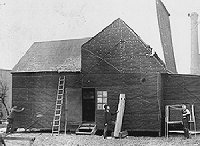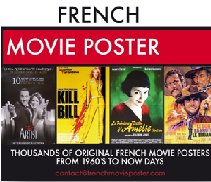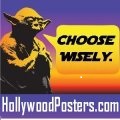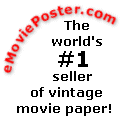In 1890, a number of inventors around the world
were developing and demonstrating the earliest forms of moving
picture equipment.
 In
the United States, when Thomas Edison marketed his Kinetoscopes
in 1891, he produced all of the films that were shown on his
new invention. In order to meet the demand for new subject films,
Edison built a production studio at West Orange in 1892. It
was nicknamed the Black Maria because it was said to resemble
a police patrol wagon.
In
the United States, when Thomas Edison marketed his Kinetoscopes
in 1891, he produced all of the films that were shown on his
new invention. In order to meet the demand for new subject films,
Edison built a production studio at West Orange in 1892. It
was nicknamed the Black Maria because it was said to resemble
a police patrol wagon.
The Edison Manufacturing Company was formed to handle the manufacture
and sale of the Kinetoscopes and their films. By 1895, sales
of Edison's invention slowed due in part to a line of cheaper
machines introduced by competitors, and the emergence of "projection
style" equipment in the industry.
When French brothers Auguste and Louis Lumiere
presented their moving picture invention in 1895, they also
produced the first films exhibited on their equipment. Likewise,
when Thomas Edison demonstrated his new "projection"
acquisition, the Vitascope, in
1896, he furnished his own films. William Kennedy
Laurie Dickson, Edison's Project Manager who left Edison's company
to form the American
Mutoscope and Biograph Company, produced his own films to
be shown with his projector.
After the initial exhibitions, inventors of projection systems
marketed their devices to the general public. Businessmen from
all over the country, many immigrants from Europe and Russia,
purchased the equipment and films and became "movie exhibitors."
Marcus Loew was a furrier who bought a projector
and traveled around to fairs putting on exhibits. He eventually
made enough money to rent two or three halls for his movie exhibits
and take in two partners: fellow furrier Adolph Zukor and secondhand
clothes dealer William Fox.
Wisconsin clothier Carl Laemmle acquired his
equipment and films and rented a hall in Chicago for his movie
exhibits.
To accommodate the new influx of film exhibitors, more movies
were needed.
At this point, anyone who could gain access
to the equipment tried his hand at movie production. Vaudeville
performers, Englishmen Albert E. Smith, J. Stuart Blackton and
Ronald A. Reader formed the American Vitagraph Company in 1896.
Inventing their own projection device, they acquired the Kinetoscope
films and made their debut at Tony Pastor's New 14th Street
Theatre. Based on their initial success, they decided to produce
their own films.
Their initial motion pictures included the typical subjects
of the day. Their first attempt at a "story" film
was shot on May 16, 1897. Their film was entitled "The
Burglar on the Roof" and told the story of a burglar and
a policeman. While the actors were filming a rooftop scene,
the wife of the building's janitor saw the two stars struggling.
Believing she was witnessing an actual crime, she began to beat
the burglar with her broom. Thinking their film was ruined,
the filmmakers were pleasantly surprised when they received
a favorable reaction from the crowd.
1900-1910
By many movie historians, this
period was probably the most important in the industry, and
probably the most controversial.
In 1900, the emphasis was on the
projectors themselves.
Vaudeville and Summer Parks
The novelty of moving images was
the focus. Vaudeville and summer parks had picked up on the
craze by adding 'moving pictures' into most programs. Quite
often films were placed as the last 'act' to give the actors
a chance to either clean up or prepare for the next show.
This facination was very brief
and the audiences started demanding more than just various forms
of movement.
When a Pittsburgh businessman converted a storefront into a
room with seats and a large screen in 1905, the movie industry
exploded.
By 1907, there were approximately 5,000 nickelodeons
throughout the United States. This created an even greater demand
for new films.
THE TRUST
Edison grew to resent the number of companies that he felt were
profiting from his invention. Recognizing that he could not
fight the "larger" studios, he banded them together
to form the "Motion Picture Patents Company." They
also formed the General Film Company to distribute their films.
This would become known as "The Trust."
The Trust members were:
BIOGRAPH
COMPANY
EDISON
COMPANY
ESSANAY
STUDIOS
KALEM COMPANY
KLEINE
COMPANY
LUBIN FILM
COMPANY
MELIES
FILM COMPANY
PATHE COMPANY
SELIG POLYSCOPE
COMPANY
AMERICAN
VITAGRAPH COMPANY
INDEPENDENT STUDIOS
This organization represented only 10 of the movie studios functioning
at this time.
There were many others, but only
a few independents actually caused concern for Edison and his
cartel. The following name a few of these "renegades."
The Trust faced its most formidable
foe in the form of entrepreneur Carl Laemmle. The German-born
Laemmle came to America in 1884 at the age of 17. He purchased
his first nickelodeon in Chicago in 1906, and soon had his own
film production business called Laemmle Film Service. Unhappy
with paying Edison's MPPC for weekly equipment and film rental,
he resigned as an MPPC licensee and opened his own company, Independent
Motion Picture Company in 1909.
By 1910, Laemmle changed the face
of the industry by creating the "star" system, much
to the chagrin of other movie companies who chose to keep their
stars anonymous. The "publicity stunt" involving Biograph
Girl Florence Lawrence shook the very core of the industry, forcing
studios to recognize and compensate the actors in their films.
In 1912, he merged IMP with Bison 101, the U. S. production facilities
of French studio Éclair, and several other film companies
to create Universal Film Manufacturing Co. and the Motion Picture
Sales and Distribution Company (called the Sales Company) to distribute
the films.
In 1915, Carl Laemmle bought a 230
acre chicken ranch on the outskirts of Los Angeles, California.
He called his studio Universal City, and made it a policy to invite
visitors to visit the facilities and observe the behind-the-scenes
magic of movie-making.
In addition to Universal, several
other studios formed in the 1909-1910 period that garnered the
attention of The Trust. These included the Thanhauser
Film Corporation, Mutual
Film Corporation, Nestor
Film Co., American Film Manufacturing Company, and the Motion
Pictures Company.
THE STRUGGLE FOR POWER
During the mid-1910's to early 1920's, the movie industry experienced
a great deal of turmoil as the major players struggled for power.
Movie production companies were bought and sold almost daily,
and stars moved or were "lured" to rival studios. Back
door dealings were the norm, as studios vied vigorously to be
No. 1.
Several significant new studios emerged out of this chaos. Some
were due to mergers, while others were formed from individuals
working with prior studios. For example, Adolph Zukor's "Famous
Players" and Jesse Lasky's "Feature Players" merged
in 1916 to form the "Famous Players-Lasky." In 1917,
while still making films for Mutual,
Charlie Chaplin built his own movie studio in Los Angeles in 1917.
He filmed all of his classic "Little Tramp" silent films
at this studio.
One of the major controlling forces
of the industry at this time was Adolph Zukor. It was Zukor's
intent to control the industry by requiring exhibitors to show
only his films. He would offer them a block of 104 films each
year. If they wanted to pick their titles, they would be charged
more money. This practice was known as "block-booking."
It was also called "blind booking," since exhibitors
had no idea of what films they were acquiring.
The leading movie exhibitors, wealthy in their own rights, resented
Zukor's power-hungry tactics. In 1917, Thomas L. Tally, a Los
Angeles theatre owner, presented a concept that pleased the exhibitors.
He proposed creating an organization of exhibitors, one from each
major city, who would buy and distribute their own films. Exhibitor
John D. Williams of West Virginia was so impressed with this idea
that he joined forces with Tally to form the First National Exhibitors
Circuit. First National increased its 100 theatres to 600 across
the country, and soon became a thorn in the side of Zukor and
his studio. First National produced films to 1935.
THE BIG FIVE
The next decade saw the movie industry experienced a shift in
power. Although there were a number of independent filmmakers,
most of the major films were being produced by eight primary studios.
They were known in the industry as the "Big Five" and
the "Little Three".
The members of the "Big Five" were:
20th CENTURY FOX
20th Century Fox was formed in 1935 as a result of the merger
of Fox Films and Twentieth Century Pictures, which had been founded
in 1933 by Daryl Zanuck. The company officially became known as
"20th Century Fox." Their studios were located in Century
City on land once used as the personal ranch of western star Tom
Mix.
MGM, originally named
Metro-Goldwyn-Mayer, was formed in 1924 by the merger of Metro
Pictures, Samuel Goldwyn Picture Corporation and the Louis B.
Mayer Pictures Company. MGM's Hollywood studio housed its own
police and fire departments, telegraph and post office facilities,
water tower and well, art department, laboratory, electrical,
pain and lock shops. It also house wardrobe, make-up, property,
lighting and camera departments.
PARAMOUNT PICTURES
In 1935, Paramount Pictures was the official name given to the
merger of Famous Players-Lasky and Paramount Film Distribution
(called Paramount Program). Their studos were located in Hollywood,
California.
RKO PICTURES, INC. RKO was originally founded in 1882 with
the opening of a single vaudeville theater and grew into the Keith-Albee-Orpheum
theater circuit, the then-largest theater chain in the world.
In 1928, David Sarnoff, president of Radio Corporation of America
(RCA) and Joseph P. Kennedy, merged the theater chain with the
Pathe Studios and the Film Booking Office of America (FBO), a
movie distribution organization acquired by Kennedy two years
earlier. The new company was renamed the Radio-Keith-Orpheum Corporation,
or RKO Corporation and produced films through the 1950's.
WARNER BROS. PICTURES
Polish brothers Harry, Albert, Sam and Jack Warner established
their film distribution business in 1907. They opened their first
film production studio on Sunset Boulevard in 1918. They formed
Warner Bros. Pictures Inc. in 1923. In 1928 the Warner brothers
bought the Burbank film lot in California from First National
Pictures calling it the Warner Bros. Studios. The studio was located
on farmland owned by dentist and rancher Dr. David Burbank, after
whom the city of Burbank was named. In 1972, Warner Brothers and
Columbia Pictures joined forces to create The Burbank Studios,
a state-of-the-art production facility. In the 1980's, they purchased
the Samuel Goldwyn Studios in Hollywood, renaming it Warner Hollywood
Studios.
THE LITTLE THREE
The "Little Three" comprised:
COLUMBIA PICTURES
Columbia Pictures originally began as the CBC Film Company in
1920, founded by brothers Jack and Harry Cohn and Joseph Brandt.
It was official named Columbia Pictures in 1924. In 1934, Columbia
purchased the first forty acres of their ranch in Burbank. By
1949, the ranch had increased to eighty acres. On June 3, 1971,
Columbia moved their Hollywood production into the Warner Brothers
Burbank lot, which was dubbed The Burbank Studios. Warner Bros.
still owns 32 acres of the original studio.
UNITED ARTISTS United Artists
was established in 1919 by movie industry icons Charlie Chaplin,
Mary Pickford, Douglas Fairbanks and D. W. Griffith. United Artists
did not own their own production facilities. The founders instead
intended the company to be a distribution arm for independent
producers, some of which did own their own studios. United Artists
did utilize the 18-acre property owned by Pickford and Fairbanks
known as the Pickford-Fairbanks Studio. In the 1920's, the lot
became known as United Artists Studio. Producer Samuel Goldwyn
financed an expansion of the property, and in1940 renamed the
lot the Samuel Goldwyn Studio, over the protests of partial land
owner Mary Pickford. The lot is now called the UA-Samuel Goldwyn
Studio.
UNIVERSAL
In 1912, Carl Laemmle merged his Independent Motion Picture Company
(which he founded in 1909) with Bison 101, the U. S. production
facilities of French studio Éclair, Nestor
Film Co. and several other film companies to create Universal
Film Manufacturing Co. In 1915, Laemmle bought a 230 acre chicken
ranch on the outskirts of Los Angeles, California, which he eventually
increased to 420 acres.. He called his studio Universal City,
and made it a policy to invite visitors to visit the facilities
and observe the behind-the-scenes magic of movie-making Universal
Studios is best known for its 1930's horror genre.
SIGNIFICANT OTHERS
An entire book can be dedicated to the number of studios that
have come and gone through the ages. Certain movie studios however
have made significant contributions to the movie industry.
Here are just a few.
Walt Disney Company
The Walt Disney Company was formed in 1923 in the rear of a small
office occupied by Holly-Vermont Realty in Los Angeles, California.
Walt and Roy Disney produced a series of short live-action/animated
films that were collectively called the "Alice Comedies."
Outgrowing their space, the Disney brothers moved next door to
larger facilities, under the name Disney Bros. Studio. In 1925,
the Disneys began construction on a new studio on Hyperion Avenue
in Los Angeles. In 1937, the Disney Studios produced the first
animated feature film, Snow White and the Seven Dwarfs. This film
proved to all that audiences were ready for full length animated
feature films. With profits from this film, the studio acquired
51 acres in Burbank to house a new modern studio specifically
for making animated films. The Studio lot was again expanded during
the 1950s to include sound stages and production craft facilities.
They purchased the 700-acre Golden Oak Ranch in Santa Clarita
in 1959.
Mongram
Picture Corporation
W. Ray Johnston founded Monogram Picture Corporation in 1930 and
produced many low budget features. Monogram merged with Consolidated
Film Industries, Mascot, and Liberty to form a new company called
Republic
Pictures, headed by Herbert Yates of Consolidated in 1935.
After a short time, Johnston and Trem Carr realized that they
had more independence on their own so they left Republic and re-started
Monogram. In 1943, they purchased 1725 Fleming Street in East
Hollywood (formerly Charles Ray Productions). Monogram expanded
its facilities by purchasing two adjacent lots, one of which faced
Sunset Boulevard leading to their address. In order to film some
bigger budget motion pictures, Monogram formed the Allied Artist
subsidiary. In 1953, they changed the name of the company to Allied
Artist and by 1964 moved their headquarters to New York. The Public
Broadcasting Station, KCET, purchased their Hollywood Studio in
1971.
Republic
Pictures
Republic Pictures was formed 1935 by the merger of Consolidated
Film Industries, Mascot, Monogram and Liberty, and was headed
by mastermind Herbert Yates, Shortly thereafter, Monogram's W.
Ray Johnston and Trem Carr realized that they had more independence
on their own so they left Republic and re-started Monogram. Republic
opened their production facilities in Studio City, California.
Republic Pictures built an impressive pool of talent, including
all of the most popular cowboy (singing and non-singing), villains
and character actors. Republic was known as the "king of
serials and westerns." The company closed its doors in 1959.
Selznick International/David O. Selznick
David O. Selznick was the son of independent film producer Lewis
J. Selznick, founder of Selznick Pictures. After the fall of Selznick
Pictures, David worked for various studios until he finally went
independent. . Merian C. Cooper got his Pioneer partners interested
in a deal with Selznick. Pioneer evolved into Selznick International
Pictures, formed on October 15, 1935. Selznick International was
capitalized at a remarkable $3 million - without one dollar contributed
by David O. Selznick. He moved into the colonial style studio
built by Thomas Ince and Triangle Studios and formerly owned by
Cecil B. DeMille. He liquidated Selznick in 1940 and formed David
O. Selznick Productions, and organized a company called the Selznick
Studio. He organized Vanguard Films in 1942, as well as a division
to specialize in medium-budget movies. In 1946, Selznick created
his own distribution company, Selznick Releasing Organization.
The 1957's A Farewell to Arms was the last film Selznick personally
produced.
American International Pictures/AIP
American International Pictures was created in 1954 as American
Releasing Corporation by James H. Nicholson (sales manager of
the RealArt Production Company) and Samuel Z. Arkoff (a Hollywood
lawyer). They introduced and refined the concept of pre-selling
the "B" films based on their poster artwork, utilizing
the artistic talents of Albert Kallis and the creativity of Paul
Blaidell.. In 1956, American Releasing Corporation was renamed
American International Pictures. AIP produced film subjects targeted
to teenagers, including action, comedy and horror. In 1966, they
introduced the biker-film genre. The 1970's brought about several
changes in AIP. They began expanding their products by purchasing
foreign sci-fi and horror films and financing more mainstream
films. By the late 1970's, they were producing big-budget movies,
which ultimately led to their downfall. In 1979, AIP merged with
Filmways.
AND THE BEAT GOES IN …
Movie studios and the films they produce are the backbone of the
motion picture industry. There have been and are literally hundreds
of studios around the world, creating and producing films daily.
This chapter merely focuses on a few studios whose contributions
to the growth and evolution of the movie industry are significant.
However, this is no way is meant to underplay the significance
of other studios not mentioned above.
To go to our History Index, click
here





